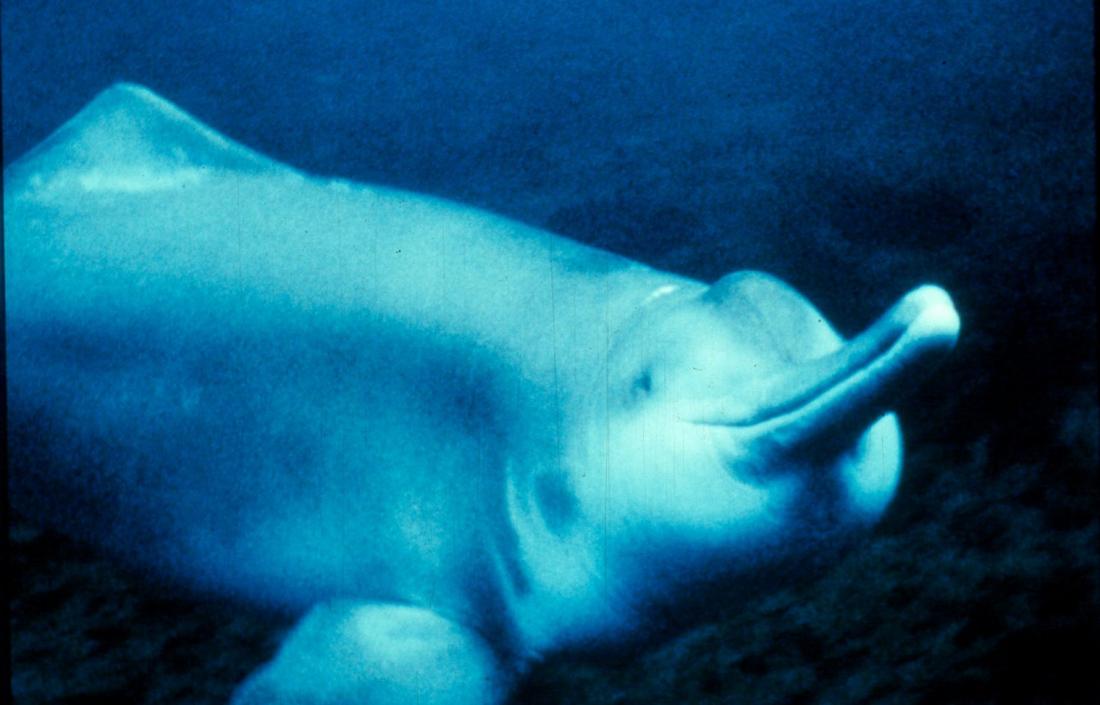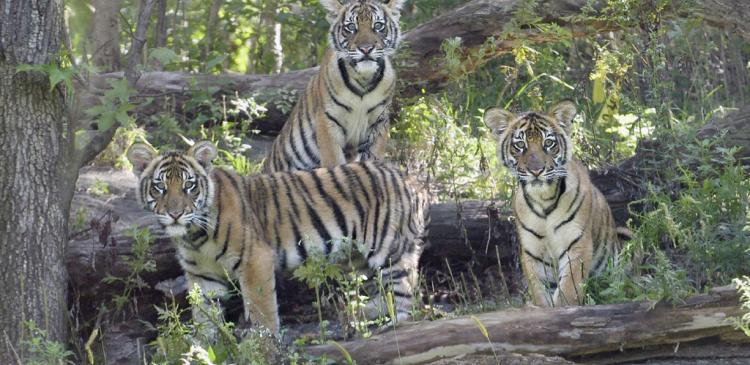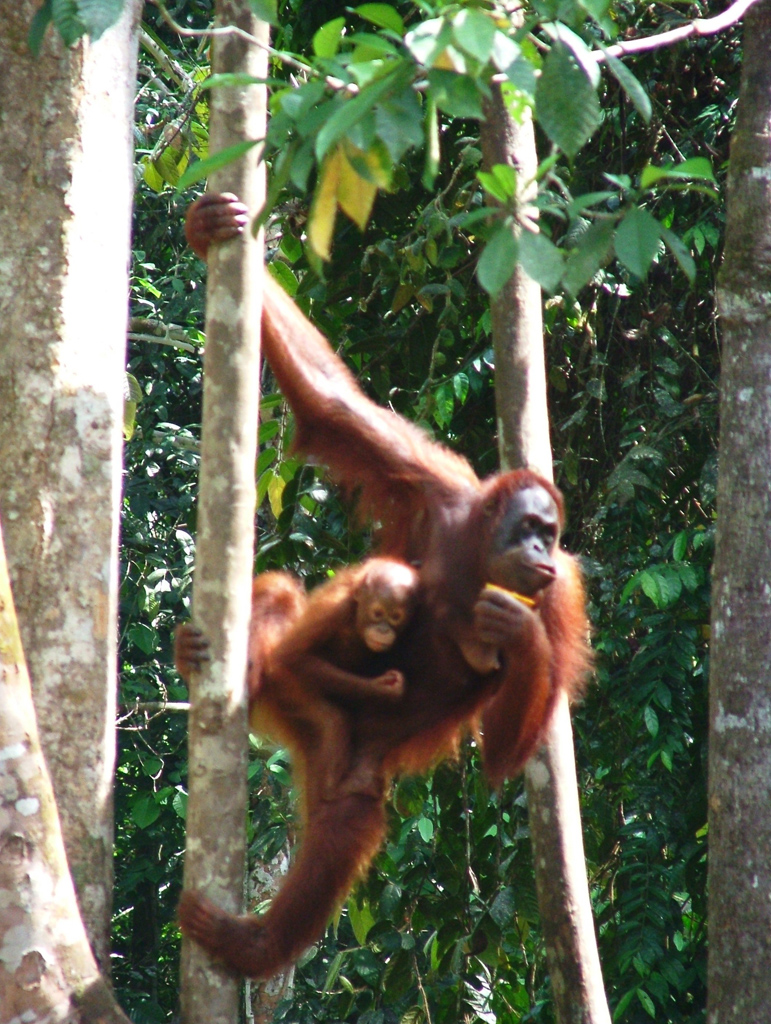WCS warns that time is running out for Asia's wildlife, this Chinese freshwater dolphin species called a baiji has already gone extinct © Stephen Leatherwood
The Wildlife Conservation Society (WCS) today released a list of Asian species that are at a conservation crossroads calling for governments to take immediate action with The Three Rs Approach: Recognition, Responsibility, Recovery.
The list includes: the tiger, orangutans, Mekong giant catfish, Asian rhinos, Asian giant river turtles, and Asian vultures. The announcement was made at the IUCN's World Conservation Congress convening in Jeju, South Korea through Sept. 13.
WCS says that each species can follow the path of the passenger pigeon, which went extinct in the early 20th century, or the bison, which was saved using the "three R's" approach. In the case of the bison, which was decimated by overhunting, its plight was recognized, responsibility was taken, and recovery resulted with more than 30,000 wild individuals in existence today. WCS was directly involved in saving the bison by breeding animals in the Bronx Zoo and working with partners to reintroduce them into protected areas in the early 1900s.
"As in the United States, it will not be the species themselves deciding which fork to take, but actions of humans using the three R's: recognition, responsibility and recovery recognizing the problem, taking responsibility for solving it, and putting species back on the path to recovery," said WCS President and CEO Dr. Cristian Samper.
Though each Asian species on the list faces daunting challenges from a variety of factors including habitat loss, and illegal hunting and trade, WCS believes that Asian governments have the ability--and financial means--to turn the tide on extinction.
The tiger is an example of a species that could be going the way of the bison, at least in some locations, according to WCS. India took responsibility for the tiger when it announced Project Tiger in 1972. By doing so it sent a clear message that the fate of the wild tiger was in its hands and India alone would be held accountable for their future. This almost unprecedented commitment led to one of the few examples of a major Asian species undertaking a sustained recovery. Today, while problems and challenges remain, India remains committed to ensuring that tigers are conserved effectively within its boundaries. Similarly, in the Western Forest Complex in Thailand, the Thai Government is taking responsibility for protecting its tigers by taking bold steps to overcome the poaching pressures.
Other species, such as the orangutan, face a bleaker future with widespread conversion of its habitat into palm oil plantations that have decimated wild populations. Asian rhinos and giant river turtles face relentless poaching pressure for the illegal wildlife trade, while Asian vultures have been nearly wiped out due to poisoning. Mekong giant catfish numbers have plummeted due to overfishing
WCS warns that time is running out for Asia's wildlife, noting that two large mammal species: the kouprey, a type of wild cattle once found in Southeast Asia, and a Chinese freshwater dolphin species called a baiji, have gone extinct.
---
FURTHER INFORMATION
The Wildlife Conservation Society saves wildlife and wild places worldwide. We do so through science, global conservation, education and the management of the world's largest system of urban wildlife parks, led by the flagship Bronx Zoo. Together these activities change attitudes towards nature and help people imagine wildlife and humans living in harmony. WCS is committed to this mission because it is essential to the integrity of life on Earth.
WCS Digital Community:
Web Sites:
www.wcs.org, www.bronxzoo.com, www.centralparkzoo.com, www.queenszoo.com, www.prospectparkzoo.com, www.nyaquarium.com
Facebook:
Wildlife Conservation Society http://www.facebook.com/TheWCS
Bronx Zoo www.facebook.com/bronxzoo
Central Park Zoo http://www.facebook.com/centralparkzoo
Queens Zoo http://www.facebook.com/queenszoo
Prospect Park Zoo http://www.facebook.com/prospectparkzoo
New York Aquarium http://www.facebook.com/nyaquarium
WCS Youtube:
http://www.youtube.com/user/WCSMedia
Twitter:
@TheBronxZoo, @NewYorkAquarium, @TheWCS
---
FACT SHEET:
Species at the Conservation Crossroads
Tiger: Only about 3,200 remaining, and of those, only about 1,000 breeding females. Occupy only 7 percent of their historic range, and 70 percent of the remaining population is in 6 percent of the current range. But we know what to do to save them. In areas with good habitat, with tigers and prey protected effectively against poachers, populations are recovering. Example: Nagarahole National Park in India.
Asian Rhinos: Three species, all suffered from dramatic population declines and range shrinkages.
--Greater one-horned rhino: well protected in some parts of India, but 70 percent of population in one National Park (Kaziranga), and remaining populations fragmented, some declining.
--Sumatran rhino: once widespread throughout Southeast Asia, now only remaining in Sabah and few fragmented parts of Indonesia, with a total of probably only about 250 animals remaining in the wild.
--Javan rhino: again, once widespread across Southeast Asia, but by 2000, limited to two wild populations, one each in Vietnam and Java. Last year, Vietnam population declared extinct. So now just one population remaining, in Ujong Kulong, possibly numbering only about 40 animals.
Orang-utans: Thousands of years ago, ranged from China through Southeast Asia to Indonesia. Now just restricted to parts of Sumatra and Borneo. Most populations of both species are located outside protected areas, in forests that are exploited for timber production or being converted to agriculture.
-- Bornean orang-utan: 50 percent decline during the last 60 years, as a result of habitat loss due to conversion of forest to agriculture and fires. Between 45,000 and 69,000 individuals remain. Habitat loss, poaching, and the pet-trade are major threats across Borneo.
--Sumatran orang-utan: 80 percent decline over the last 75 years; approximately 7,300 individuals remain. Most remaining populations are in Aceh Province. Pressure on forests is increasing as a result of the recent peace accord, and a dramatic increase in demand for timber and other natural resources after the December, 2004 tsunami.
Mekong Giant Catfish: Endemic to the Mekong basin. Local fisheries began to report the disappearance of this fish in the 1970s. Current population size is unknown, but a decline of more than 80 percent since 1990 can be estimated from past annual catch records. Fishing effort in the Mekong basin is increasing, and the loss of migratory routes through the construction of dams may also have a negative impact on fish abundance in the river.
Asian Vultures: Declined by more than 90 percent across the Indian subcontinent. Direct killing account for 10 percent of recorded vulture deaths, but the main cause of mortality has been diclofenac, an anti-inflammatory drug used for veterinary reasons in cattle that is toxic to vultures when the carcass is consumed. Populations remain stable in Cambodia where the government has placed restrictions on the use of diclofenac.
Critically Endangered Species:
-- Red-headed Vulture (Sarcogyps calvus)
-- White-rumped Vulture (Gyps bengalensis)
-- Slender-billed Vulture (Gyps tenuirostris)
Batagur Turtles: Group of turtles closest to extinction. Heavily harvested and exploited for flesh and eggs. Five species are critically endangered and one is endangered. So few individuals remain in some cases that assurance colonies are the only hope for species survival.
-- Batagur baska: Northern River Terrapin-- Previously highly abundant in river deltas of India and Myanmar. Now, no known nesting areas, and only a few individuals remain in the wild. Concerted effort is needed to bring captive individuals together for breeding groups.
-- B. trivittata: Burmese Roofed Turtle-- Considered extinct from 1930s to 2002 when remnant populations were discovered. Only 5-7 breeding adult females in the wild. Almost 400 hatchlings have been transferred to headstarting facilities. Plans for release of 5-year old headstarted males.
-- B. affinis: Southern River Terrapin-- Previously considered one species with B. baska. Only isolated populations remain, but poaching of turtles and eggs still occurs. Conservation projects have only been able to secure hatchlings and adult mortality has not yet been effectively addressed.
-- B. kachuga: Red-crowned Roofed Turtle-- Exists primarily along the Chambal River in central India, with isolated populations in Bangladesh. Approximately 500 adult females remain. Breeding programs have produced over 4000 hatchlings.
--B. borneoensis: Painted Terrapin-- Global status not fully elucidated; most populations in serious decline. Suffered from uncoordinated conservation efforts. 200 head-started individuals have been released, but all rivers with viable populations have not been identified.
The tiger is an example of a species that could be going the way of the bison, at least in some locations, according to WCS. India took responsibility for the tiger when it announced Project Tiger in 1972. By doing so it sent a clear message that the fate of the wild tiger was in its hands and India alone would be held accountable for their future. This almost unprecedented commitment led to one of the few examples of a major Asian species undertaking a sustained recovery. © Julie Larsen Maher/WCS





